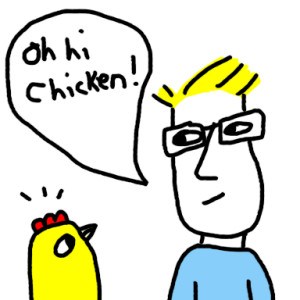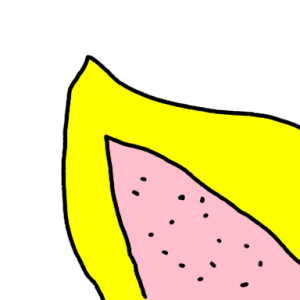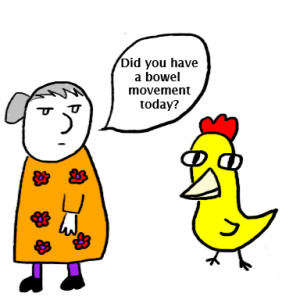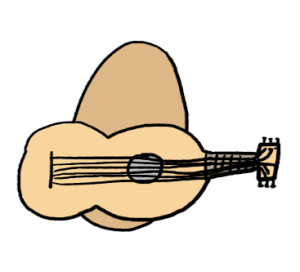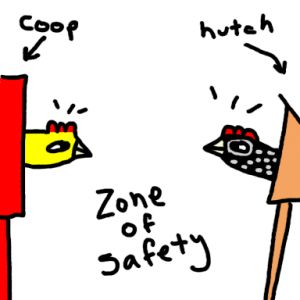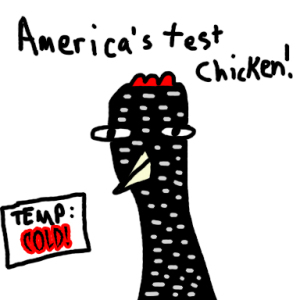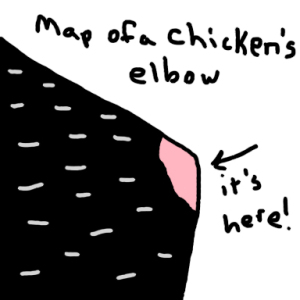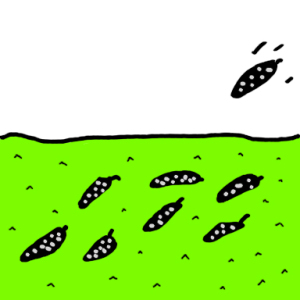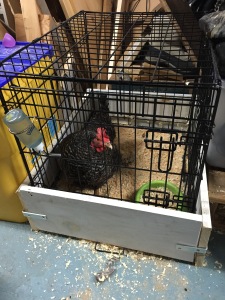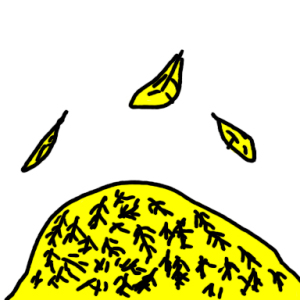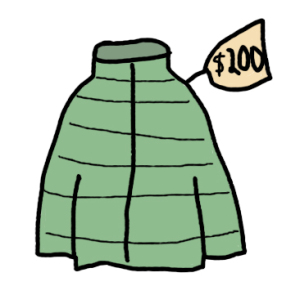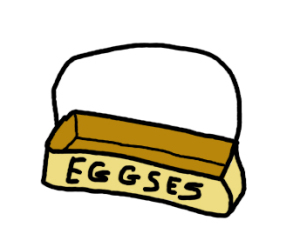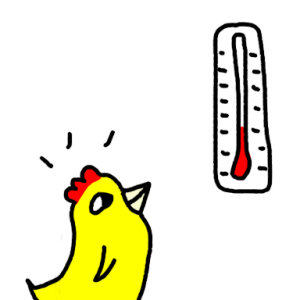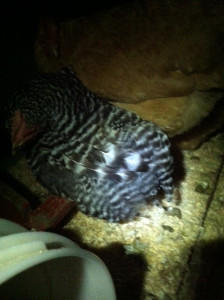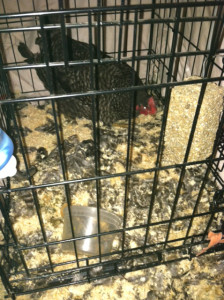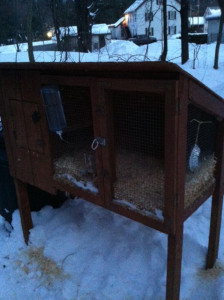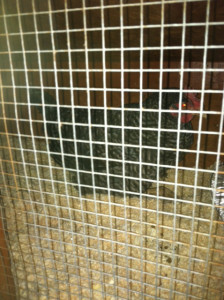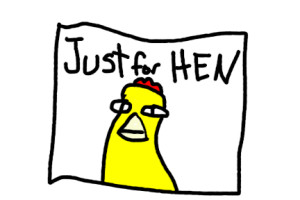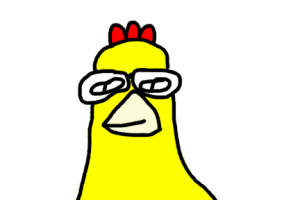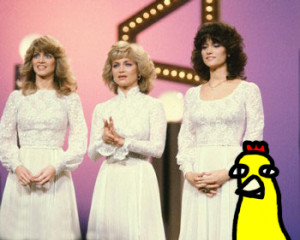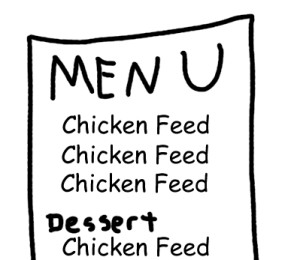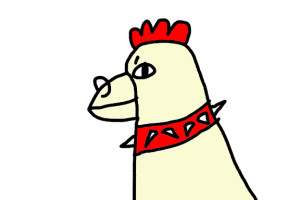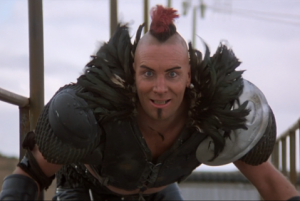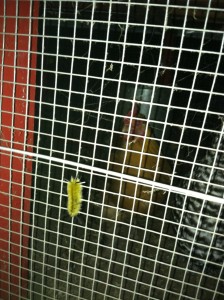Hello September!
Friday, September 4th, 2015Well, my little August break was nice, but now it’s back to work. I mean, it was still back to work in terms of the chickens, since I couldn’t just go on a vacation from feeding them without any repercussions, I was just taking a break from talking about them. Not from talking to them, though, which I find myself more and more aware of now that there are sometimes people in the house next door. I suppose they’re the ones who need to get used to it, not me. I’m so used to it I don’t even notice I’m doing it half the time.
Beyond my own experiments in inter-species communication, things have been pretty good with the chickens lately. The mites still seem vanquished, and butt feathers are still sprouting. Maybe not as fast as I’d like them to, but if there’s one thing I’ve learned since getting chickens, it’s that everything ends up taking way more time than it’s supposed to. Case in point: building the coop. Hopefully that was a one-time event. As I predicted, molting season may be combining with butt feather regrowth season, since I’ve been seeing a fair bit of Mandrell Sister plumage floating free in the coop lately. I suppose seeing it early is better than seeing it later, since last year they all molted quite late, and it was a very cold time to not be fully feathered. I figure if you’ve got to grow some feathers back anyway because of the mites, why not just dump a bunch and totally start over? I’m not sure that’s how it actually works, but I need to impose some sort of logic onto all this.
We haven’t seen much of the turkeys lately, but that doesn’t mean they’re not around. I suppose since August is when many people take vacations, who’s to say turkeys don’t do the same? Probably people who study turkeys. But since I’m throwing around hare-brained ideas, I might as well get this one in there too.
One big event that happened during my hiatus is only marginally related to the chickens, in that it only happened because I was going out to the coop to feed them. But if they weren’t there, I wouldn’t have been out there alone in the dark, so I guess it’s totally related to the chickens. So let’s proceed from there. I’ve mentioned before that where we live has basically every predator that you can get in New England. I haven’t seen them all personally, but the farmer down the street has, and so I am generally quite vigilant about keeping everyone safe. In the winter, I always look for tracks around the coop in the snow, but so far I haven’t seen any. Either the animals can tell the electric fence, much like the Wu-Tang Clan, is not something to mess with, or they just are really bad at figuring out that there are chickens in there. I’m not complaining, I’m just saying I’m a little surprised that we haven’t seen more break-in attempts. But the other morning as I was coming out with breakfast, I saw a set of eyes reflected in the light of my headlamp. (Sadly, those glorious weeks when it’s light when I get up have passed.) Normally, if I see some eye reflections, they turn and disappear as soon as I approach. This time, not so much. In fact, the eyes began to approach me. This was not good. I quickly began to make out the shape of the creature, and I began to worry that I was looking at a baby bobcat, which could possibly mean that there was a mama bobcat nearby. As my bowels contemplated voiding themselves, I happened to catch a shadow of a tail in the ever-shortening distance between me and the eyes, and thankfully realized that it was just a regular cat, and one we see pretty often. I joke that he’s one of our cats’ boyfriends, since he sits outside the sliding door and looks in at her, but she seems to hate him, so I guess maybe he’s more of her stalker. Either way, if he’s trying to get in with her, I recommend he knock off the scaring me in the morning. He stopped walking towards me when he got to the steps of the sliding door and assumed his place, gazing indoors at our cat who clearly was not pleased about having a visitor. The chickens were safe, and ⅓ of the cats were annoyed. A pretty typical morning.
(CREDITS: Theme music: Chicken In The Barnyard by Fireproof Babies, Music bed: Snake Rag by King Oliver’s Creole Jazz Band)
